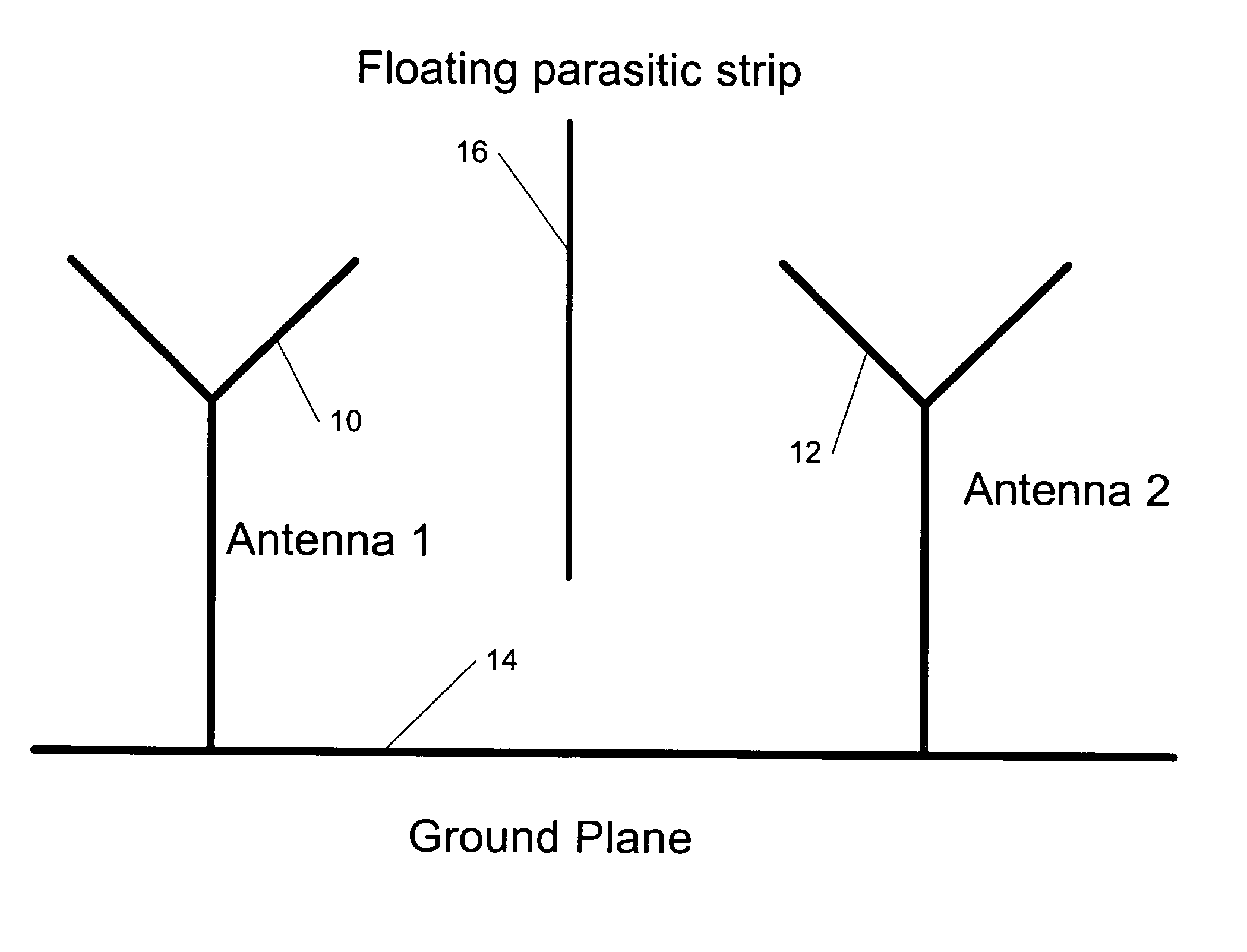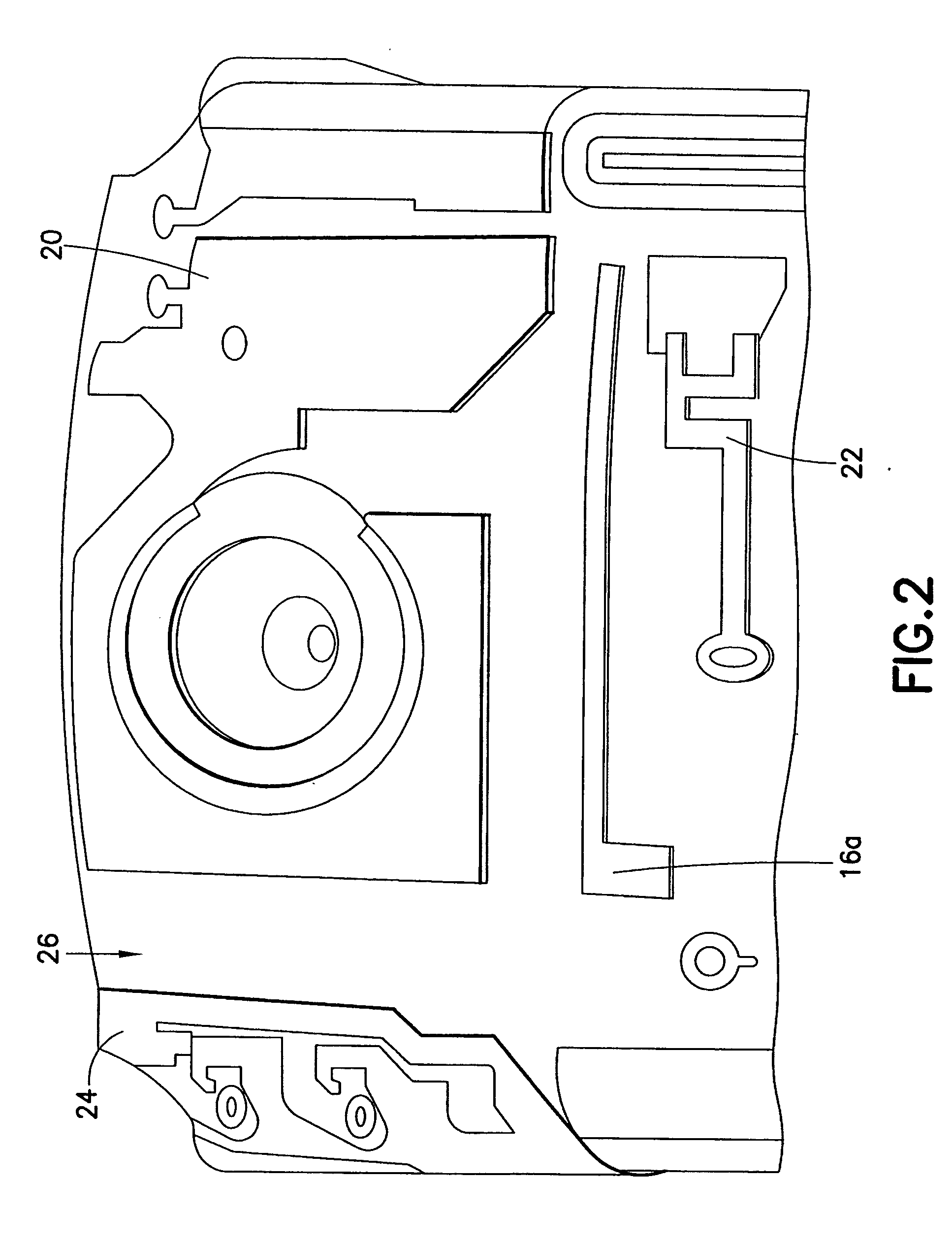Isolation between antennas using floating parasitic elements
a technology of parasitic elements and antennas, applied in the field of antennas, to achieve the effect of improving isolation
- Summary
- Abstract
- Description
- Claims
- Application Information
AI Technical Summary
Benefits of technology
Problems solved by technology
Method used
Image
Examples
Embodiment Construction
[0033] The present invention provides a new method for improving isolation between an antenna (e.g., a main antenna) and at least one further antenna (e.g., a BLUETOOTH / WLAN antenna, a diversity antenna, etc.) in an electronic communication device by a parasitic element placed physically between these two antennas for providing an isolation from electro-magnetically coupled currents between these two antennas in a ground plane, wherein the antennas are connected to the ground plane and said parasitic element is floating and electrically isolated from the ground plane.
[0034] According to the present invention, the electronic communication device can be (but is not limited to) a portable communication device, a mobile electronic device, a mobile phone, or a handset. Moreover, the antenna and the further antenna typically can have different operating frequency ranges as well as the same operating frequency (e.g., for the diversity antennas). Furthermore, in the mobile phone the main a...
PUM
 Login to View More
Login to View More Abstract
Description
Claims
Application Information
 Login to View More
Login to View More - R&D
- Intellectual Property
- Life Sciences
- Materials
- Tech Scout
- Unparalleled Data Quality
- Higher Quality Content
- 60% Fewer Hallucinations
Browse by: Latest US Patents, China's latest patents, Technical Efficacy Thesaurus, Application Domain, Technology Topic, Popular Technical Reports.
© 2025 PatSnap. All rights reserved.Legal|Privacy policy|Modern Slavery Act Transparency Statement|Sitemap|About US| Contact US: help@patsnap.com



